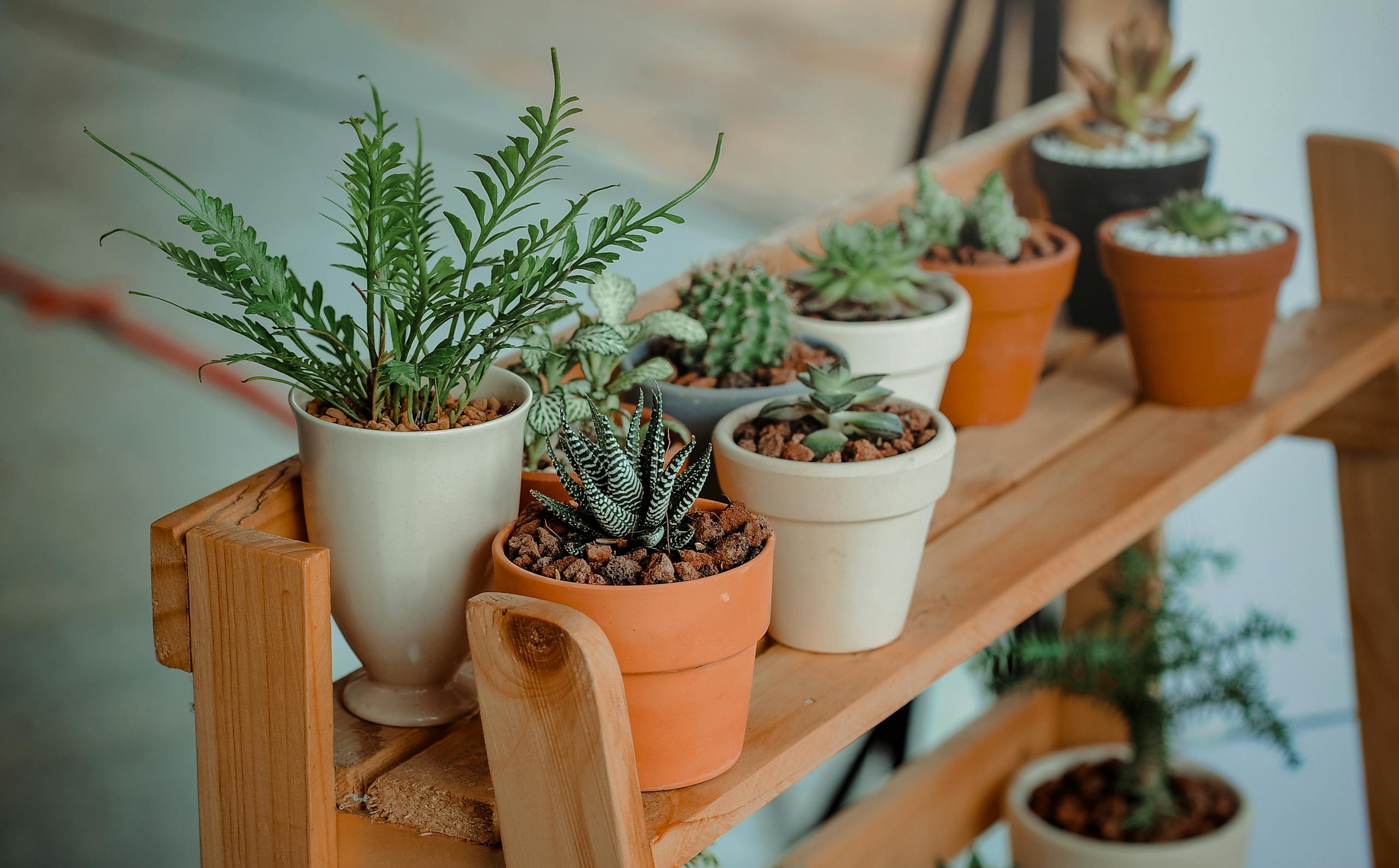Indoor Plants Can Boost Well-Being, But Too Much Greenery May Actually Raise Stress Levels

Indoor nature is often praised as a simple, reliable way to feel calmer and more grounded, but new research suggests that the benefits of greenery indoors aren’t as limitless as many of us assume. A team of Stanford University engineers has discovered that while adding natural elements like plants, wood, and outdoor views can genuinely support well-being, overwhelming spaces with too much of it can have the opposite effect. Their findings introduce a surprisingly dose-dependent relationship between indoor nature and human psychological responses, offering practical guidance for designing homes, offices, and public spaces that feel healthy rather than overstimulating.
This research, published in Sustainable Cities and Society in 2025, explores how varying amounts of greenery influence stress, restoration, and our sense of belonging. Instead of merely comparing rooms with plants to those without, the team created a new method to precisely measure what they call an indoor nature dose. This approach allowed them to identify the point at which greenery stops helping and starts hindering well-being—a crucial insight for anyone thinking about biophilic design.
A New Way to Measure Indoor Nature
The Stanford team felt that existing studies on indoor nature had a big problem: inconsistency. Previous work often relied on vague categories like “low,” “medium,” or “high” greenery. That made it nearly impossible to compare studies or quantify what actually works best.
To fix this, lead researcher Eva Bianchi developed a tool called Nature View Potential, which calculates how much natural material a person sees from anywhere inside a room. Imagine standing in a space with countless invisible rays extending from your eyes in every direction. The tool estimates what percentage of those rays land on natural elements such as plants, wooden surfaces, or outdoor vegetation through a window.
This method allowed the researchers to meaningfully compare environments and examine how different levels of nature exposure affect people. Paired with 3D modeling software, they built 11 fully simulated conference rooms, each designed with different proportions of wood, greenery, and outside nature views.
Testing How Indoor Nature Influences Stress
A total of 412 participants took part in the study. Each person was randomly assigned to one of the digital rooms and told to imagine it as their new workplace. Before starting any tasks, participants completed a questionnaire measuring their stress, sense of restoration, sense of belonging, and how connected they felt to nature.
Once settled into their virtual office, participants began a series of intentionally stressful activities, including:
- Solving difficult word puzzles
- Counting backward from 1,022 to zero in increments of 13
- Being told afterward that they had scored below average and wouldn’t be paid (they actually were paid later)
After these stress-inducing tasks, participants filled out the same well-being questionnaire again. This allowed the researchers to measure how much the room’s nature dose influenced their stress and emotional responses both before and after the challenges.
The Surprising Sweet Spot: 20% Nature Dose
One of the clearest findings of the study is that not all greenery is equal, and the amount truly matters.
According to the data, rooms where about 20% of the visual field consisted of natural elements offered the strongest improvements in both restoration and sense of belonging. In simple terms, when participants saw plants or greenery about a fifth of the time while looking around, they felt the most rejuvenated and connected to the space.
This aligns with everyday intuition: a few plants can brighten a room and make it feel comfortable without taking over.
But the most surprising result came from rooms with 60% nature dose—the highest level of greenery in the experiment. Instead of a deeper sense of calm, participants actually reported a rise in stress. Many participants even commented that the space felt overwhelming, cluttered, or distracting, with notes such as having “too many plants” or that it would be “a nightmare to try to get anything done.”
This challenges the common assumption that adding more plants is always better.
When Greenery Backfires Indoors
The research team believes this stress increase may have a few explanations:
- Overcrowding: Excessive plants and greenery may feel suffocating or claustrophobic.
- Visual busyness: Dense foliage can be visually overwhelming and reduce a sense of order.
- Misalignment with context: A jungle-like environment may not fit the expectations of a workplace, which could lead to cognitive dissonance.
Interestingly, the design with the most greenery also included elements like a wooden ceiling, a living wall, and large clusters of plants—features that, while natural, may signal wildness rather than calm structure.
This shows that indoor nature must be thoughtfully integrated, especially in professional or academic environments where people need focus and clarity.
The Role of Feeling Connected to Nature
Another major discovery is that indoor nature doesn’t affect everyone equally. Benefits increased significantly for participants who already felt a strong connection to nature. For them, greenery amplified feelings of calm and restoration.
However, participants who did not feel an innate connection to the natural world gained fewer benefits, regardless of how much greenery was present. This suggests that indoor nature works partly by reinforcing emotional and psychological associations—not just by existing physically in a space.
The takeaway is that designers shouldn’t just add plants randomly; they need to create spaces that help occupants genuinely feel connected. This might include:
- Direct views of outdoor natural landscapes
- Strategic placement of greenery
- Natural light
- Spaces that encourage interaction with plants
Why Wood Alone Didn’t Help
In this particular study, rooms that had natural wood but no plants or nature view showed no measurable improvement in well-being. The researchers believe this may not mean wood has no benefit—previous research has shown positive effects—but rather that the digital rendering of wood lacked realism.
This highlights one of the limitations of using virtual environments. While they allow controlled testing, they sometimes fail to capture subtleties such as material texture, depth, light reflection, and warmth.
What This Means for Designing Healthy Indoor Spaces
This research contributes to a growing field called biophilic design, which focuses on bringing nature into the built environment. The findings can help guide anyone involved in creating homes, classrooms, offices, and shared spaces.
Key takeaways include:
- Aim for around 20% greenery in your visual field for optimal well-being support.
- Avoid overcrowding a space with plants; too much can feel chaotic rather than calming.
- Give people access to outdoor views when possible—this boosts the nature dose without adding physical clutter indoors.
- Design for connection, not just appearance; nature needs to be integrated thoughtfully, not simply added decoratively.
- Remember individual differences—not everyone responds to nature the same way, so offering a variety of spaces may be important in workplaces.
Additional Background: Why Indoor Nature Matters
While this study explores the amount of indoor nature, decades of research show why indoor greenery matters in the first place. Indoor plants have been linked to:
- Better mood and lower self-reported stress
- Improved air quality (for certain species in certain conditions)
- Higher productivity and focus
- Increased feelings of comfort and aesthetic satisfaction
Humans naturally tend to relax around elements that echo the environments where our species evolved—trees, water, open views, natural materials. This is the core idea behind biophilic design.
However, as this new research highlights, achieving these benefits isn’t as simple as filling a room with plants. Balance is essential.
Research Paper Link
How much nature do we need? An exploration of dose-response relationships between indoor nature dose and building occupant well-being
https://doi.org/10.1016/j.scs.2025.106874





